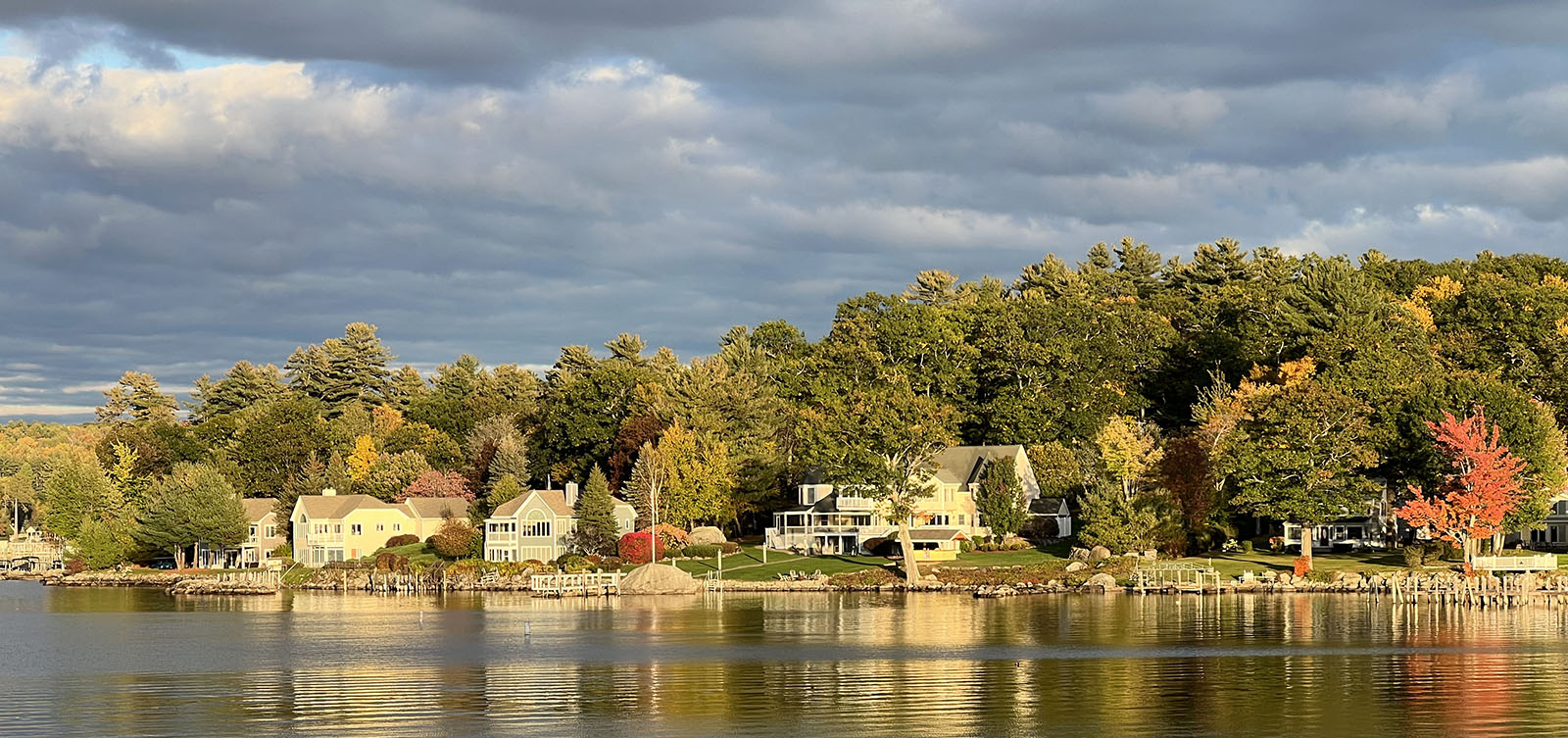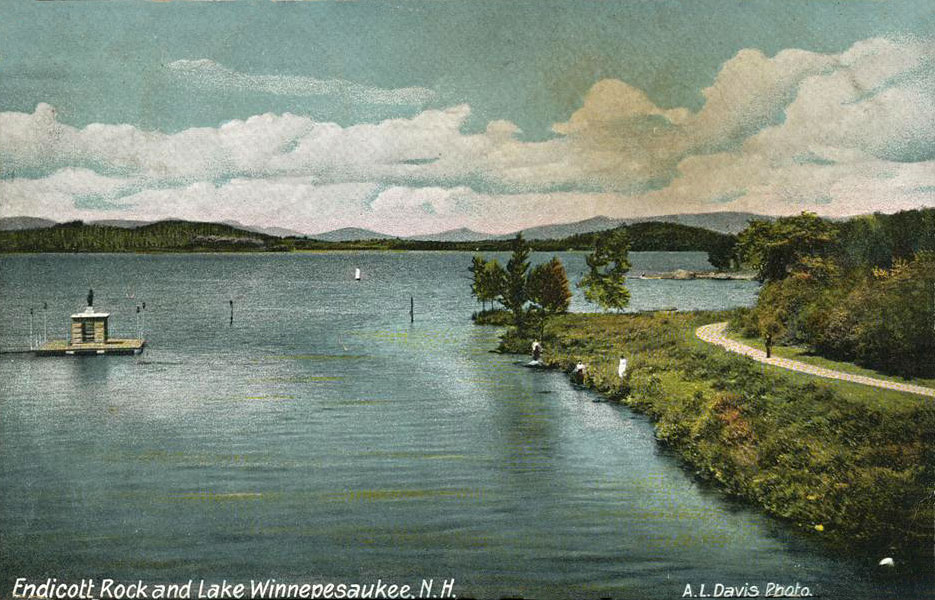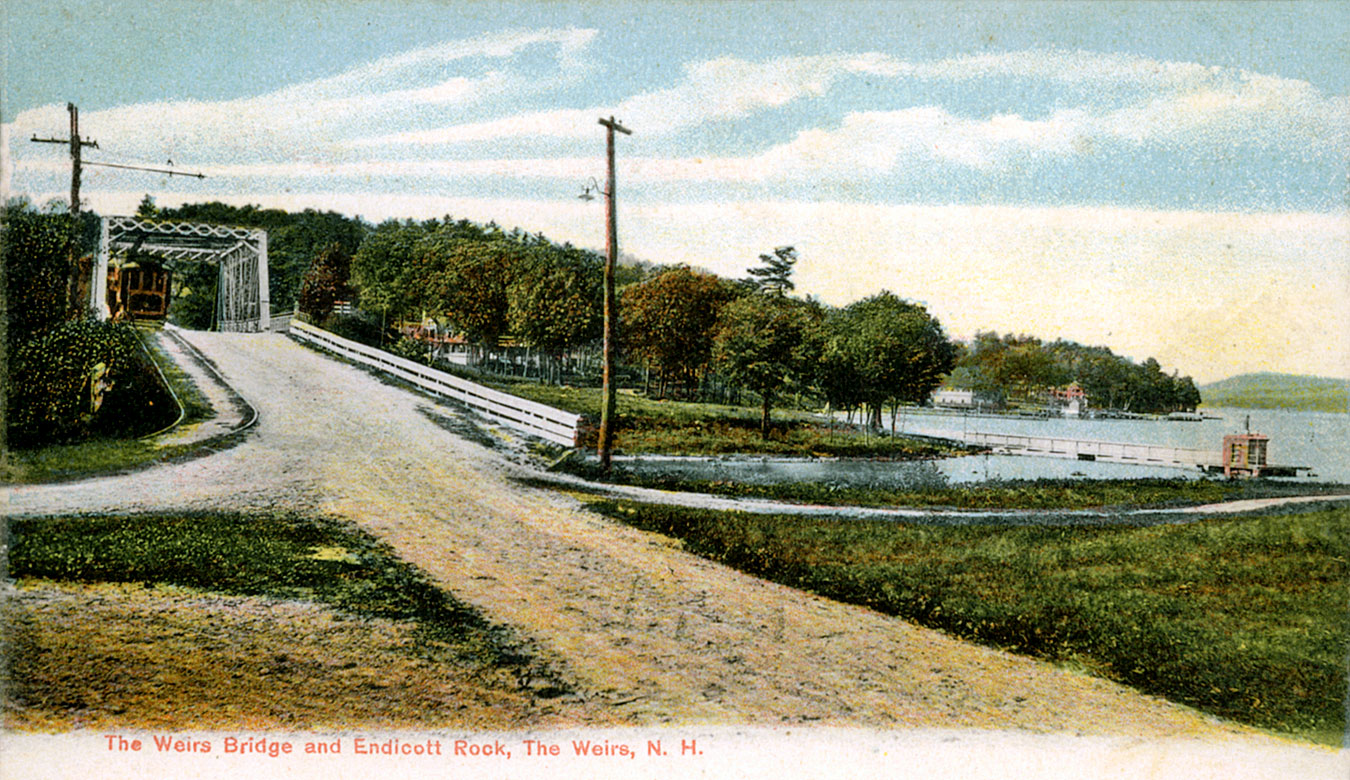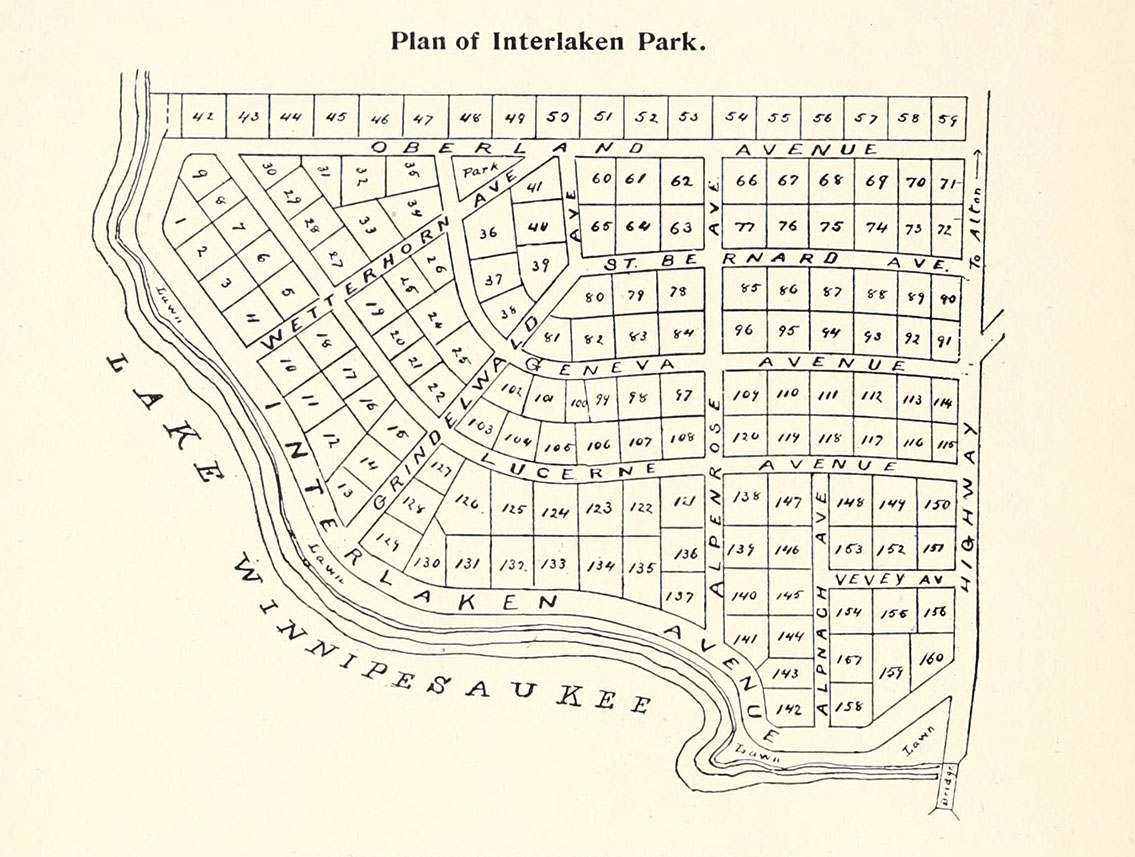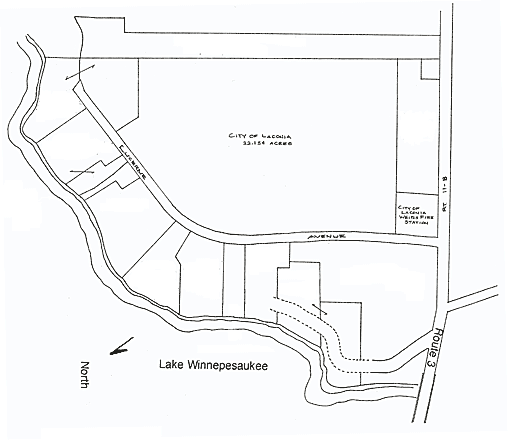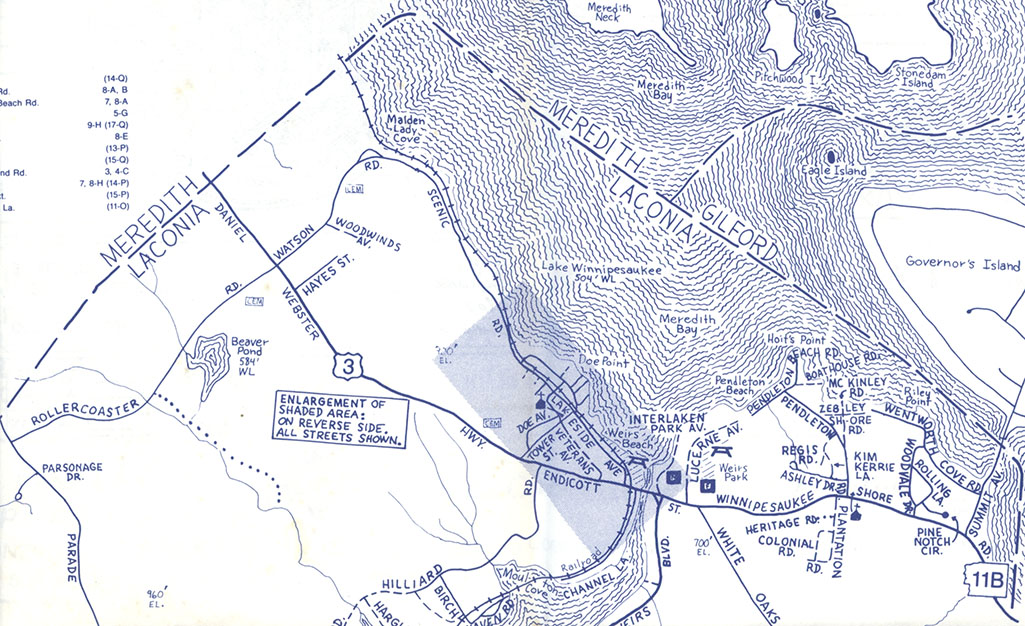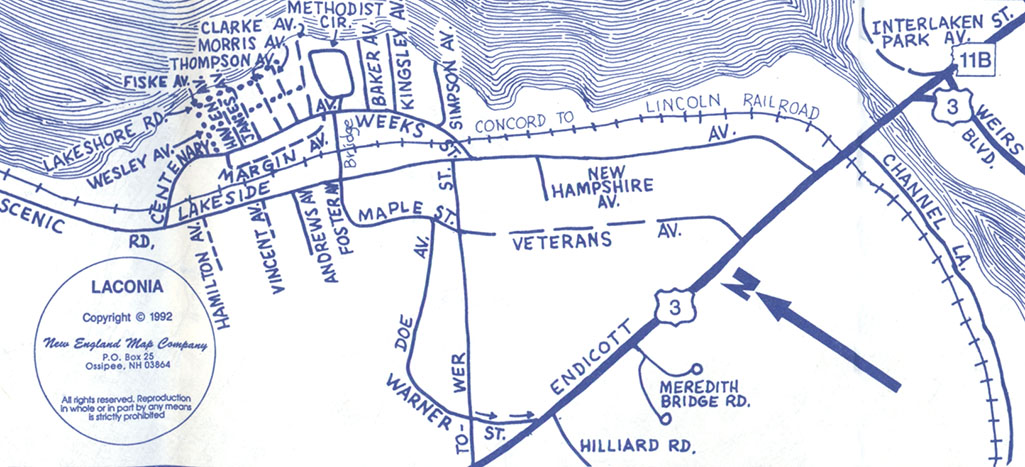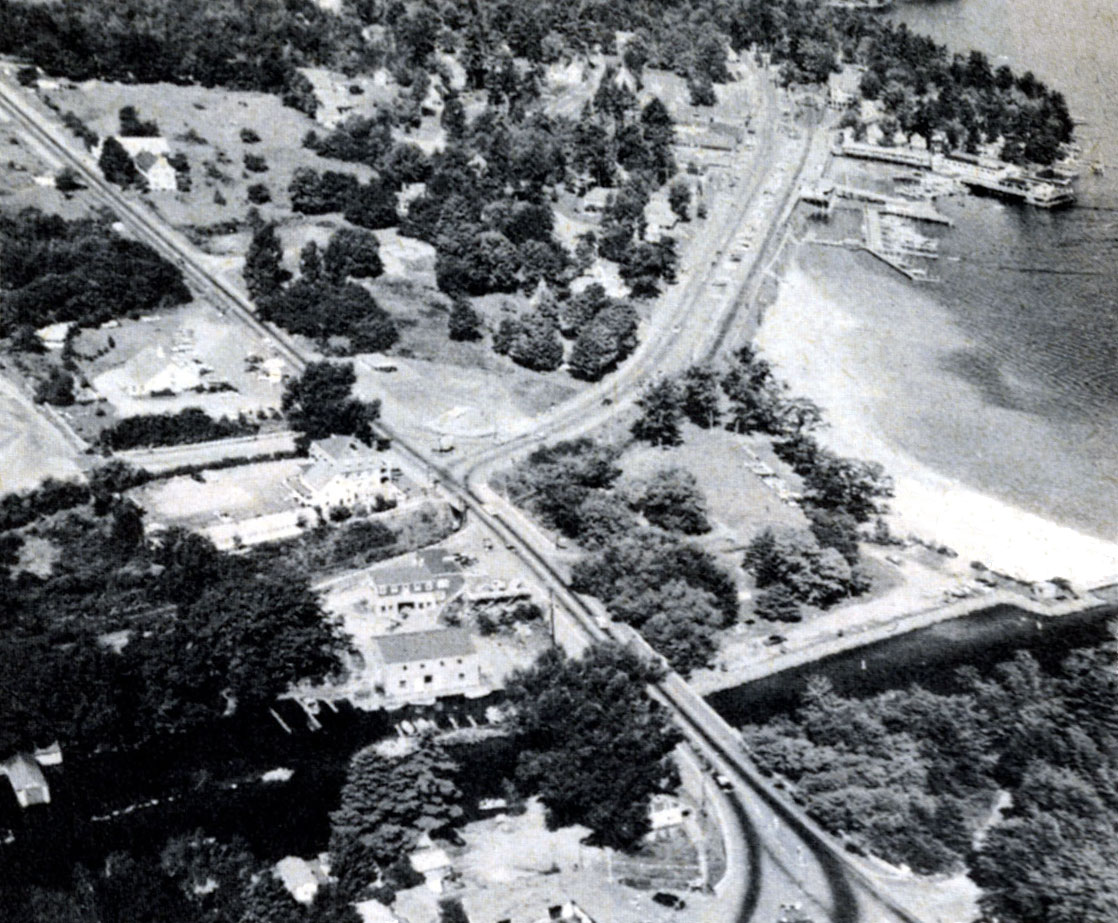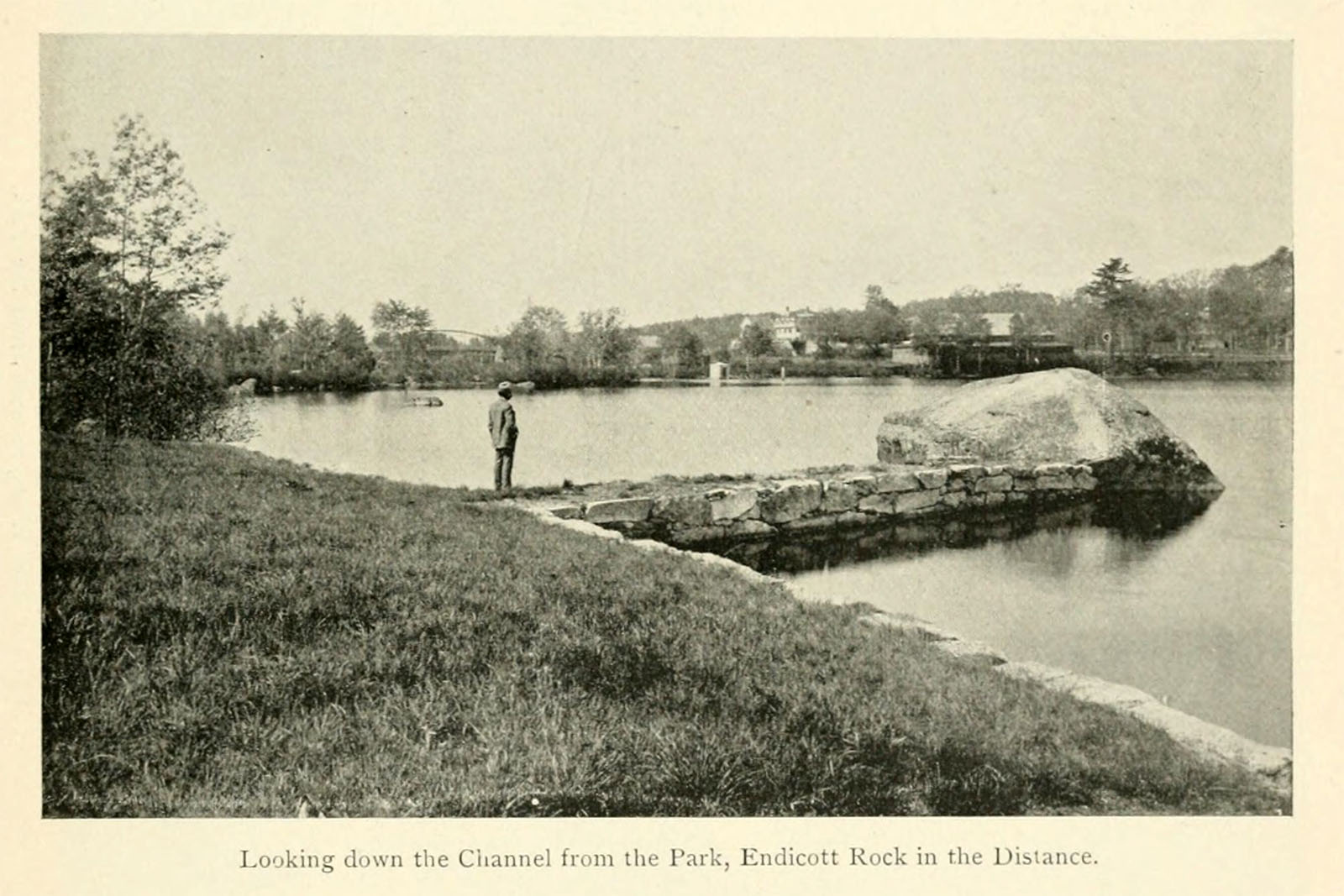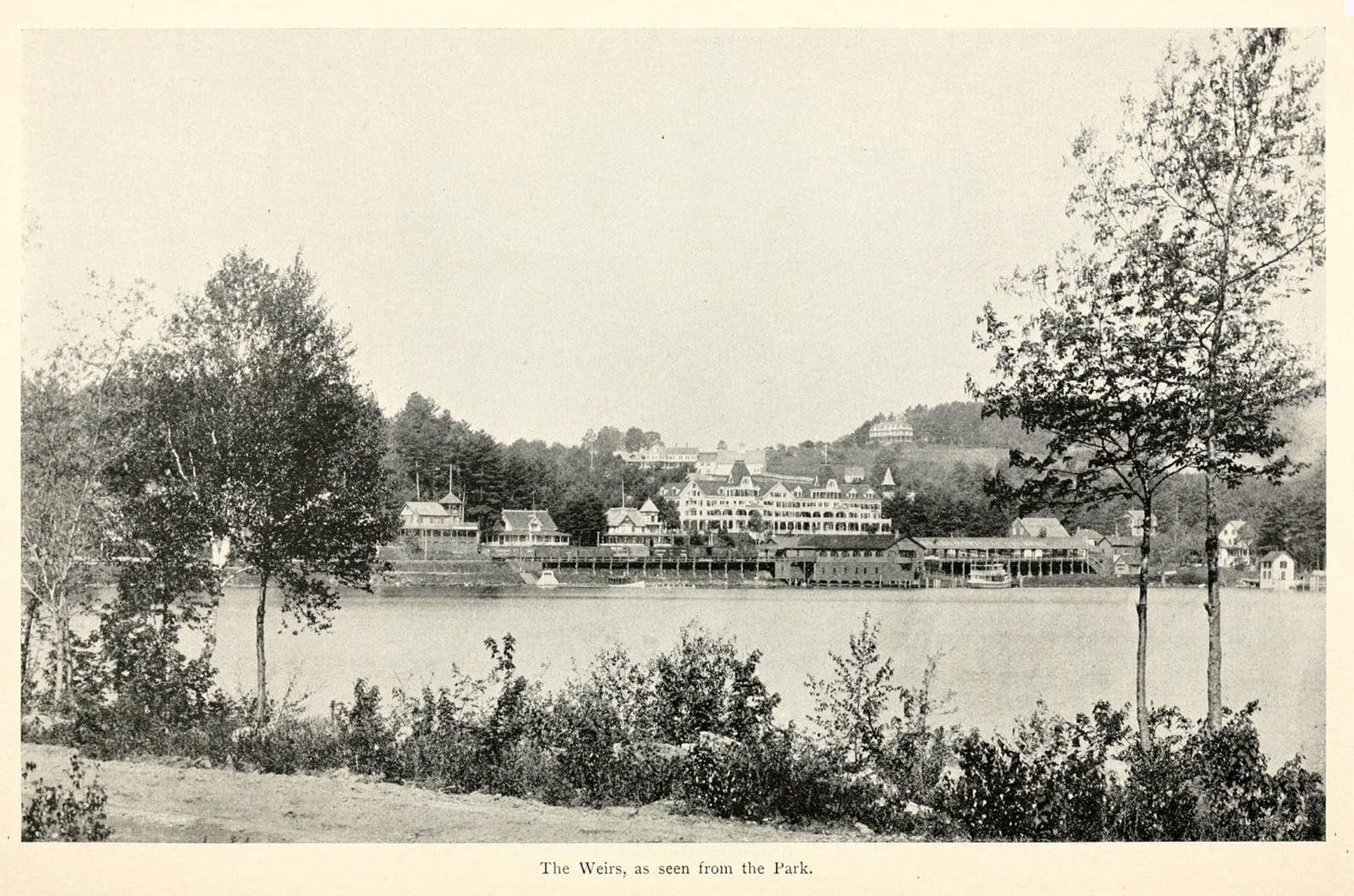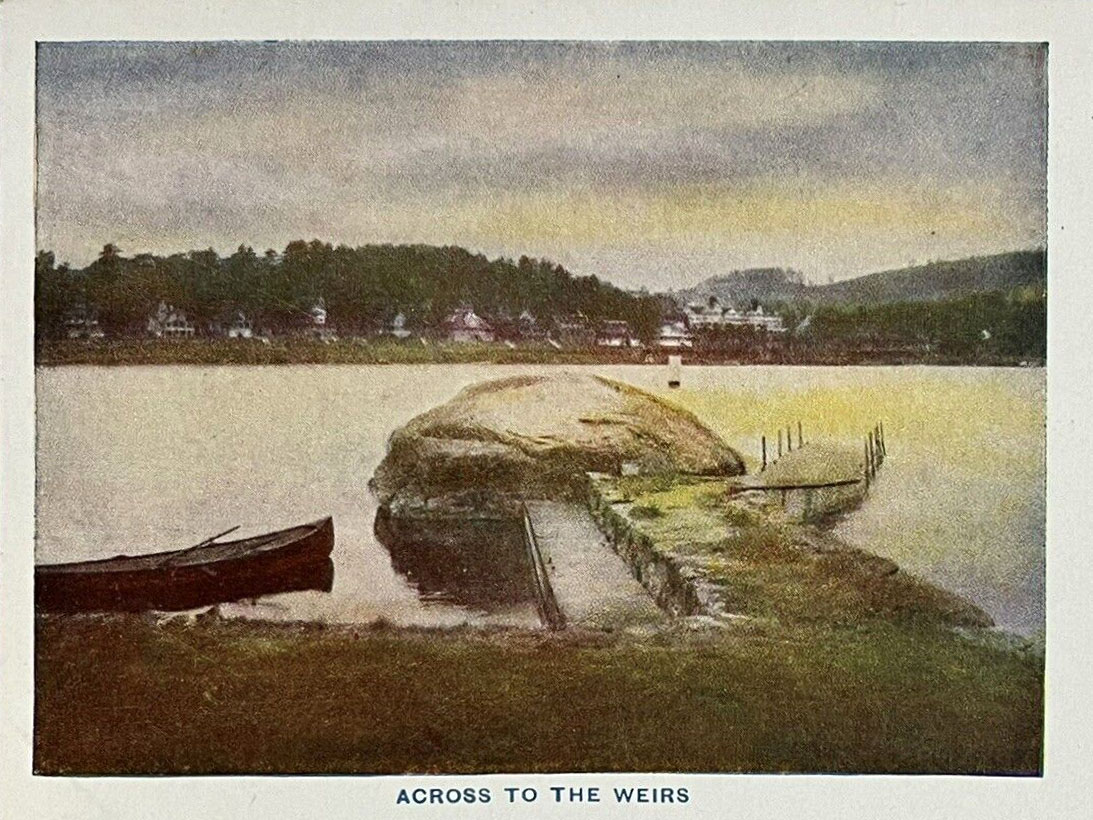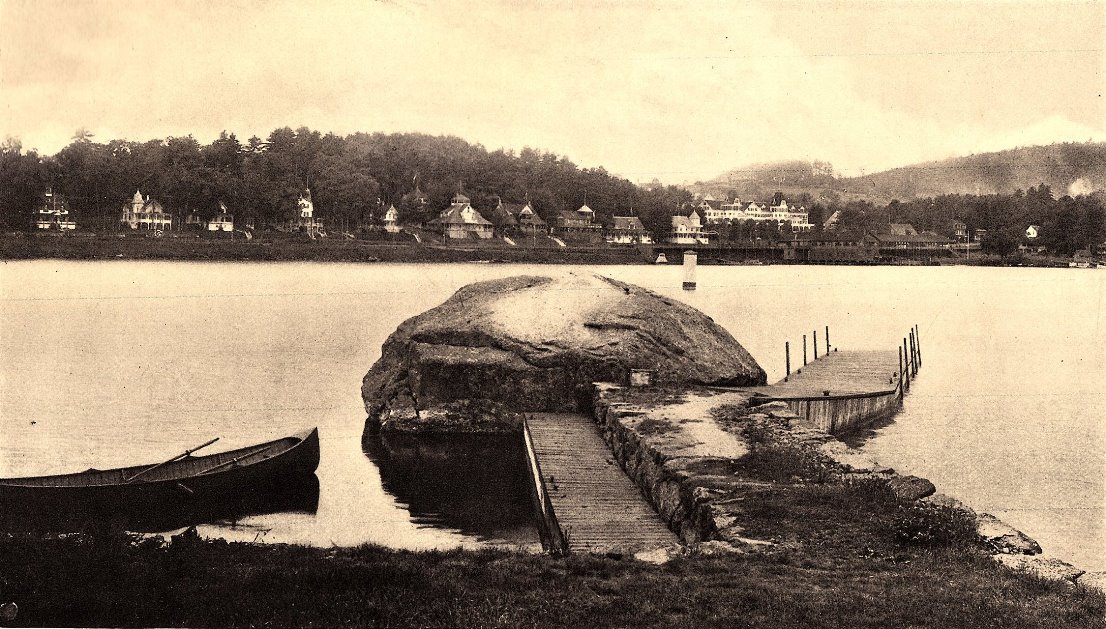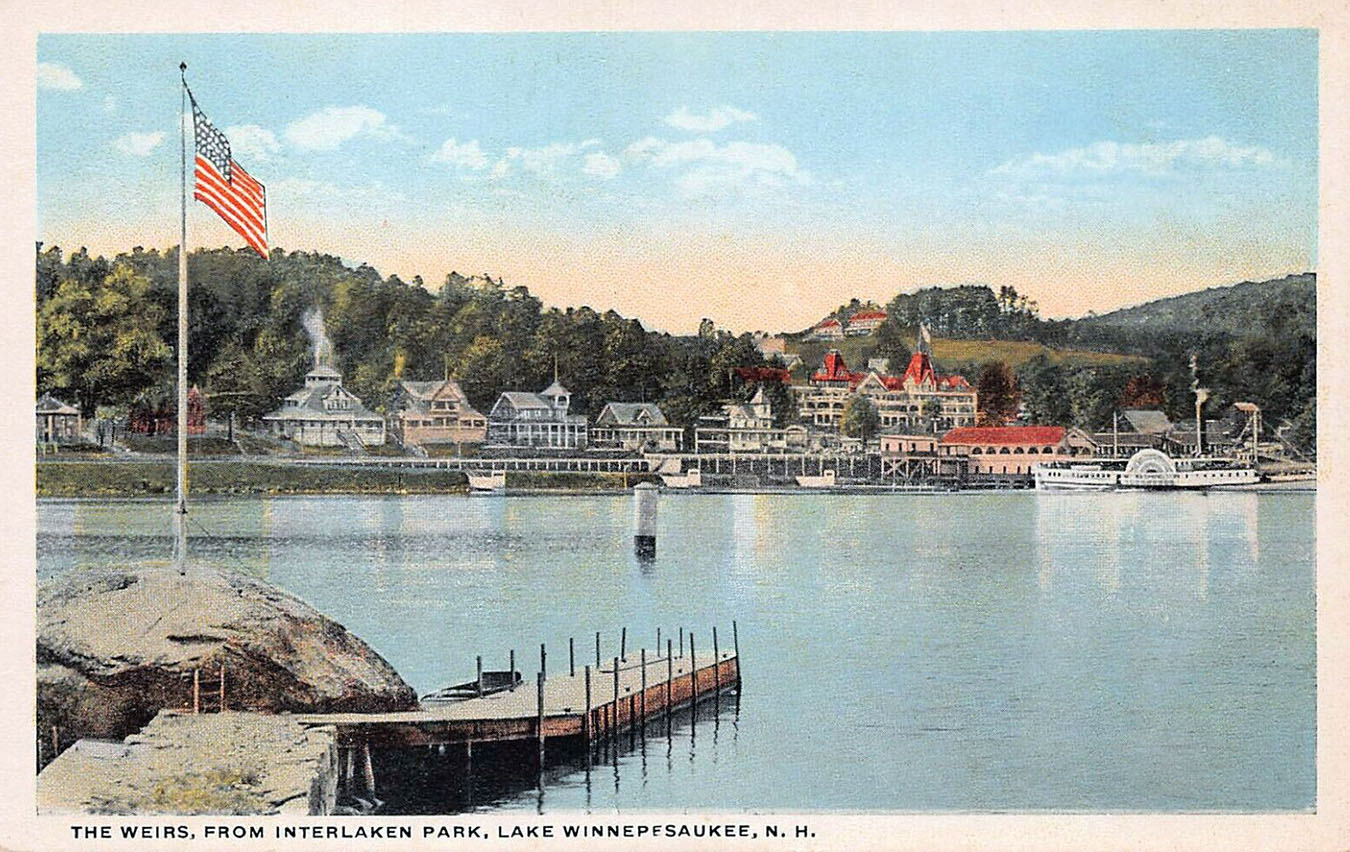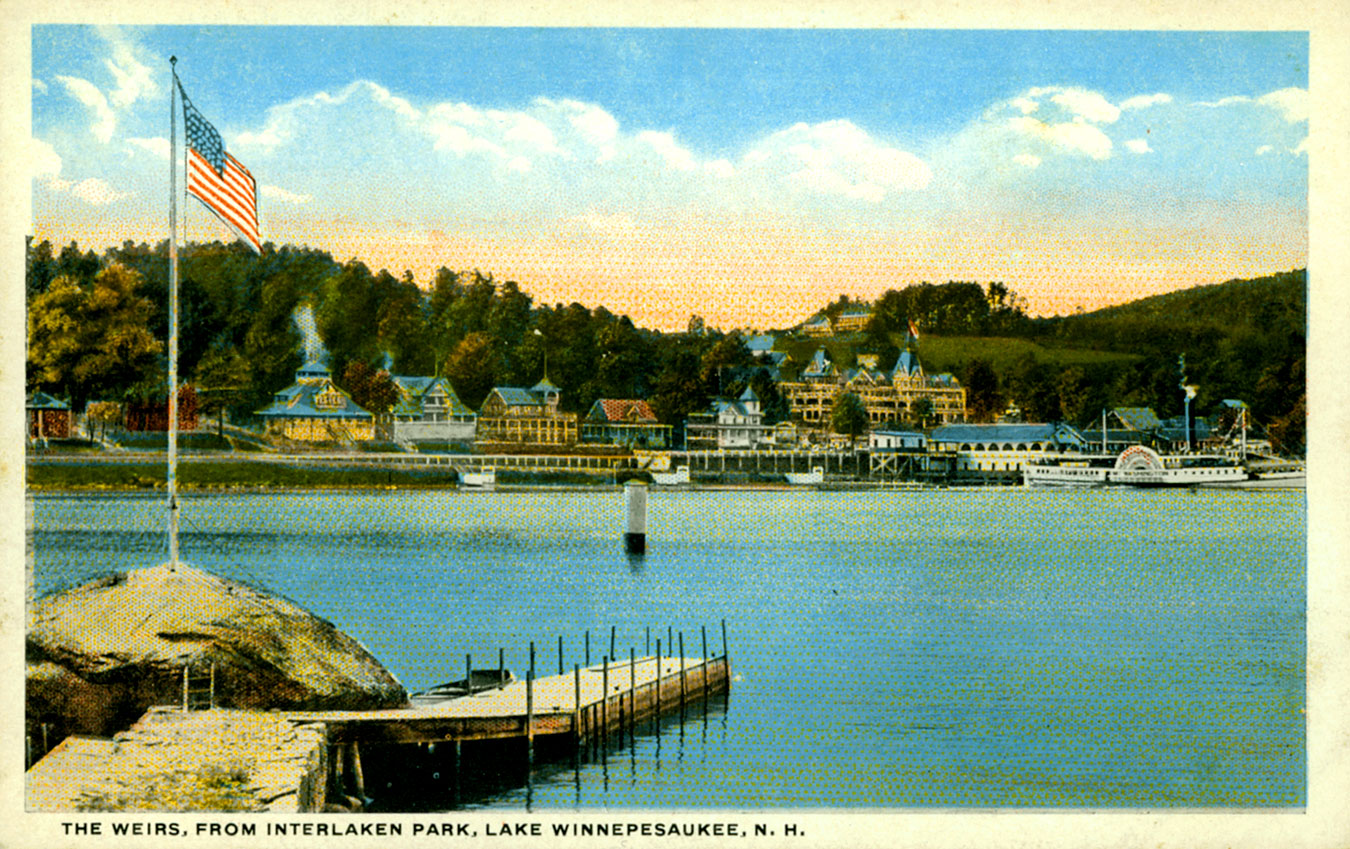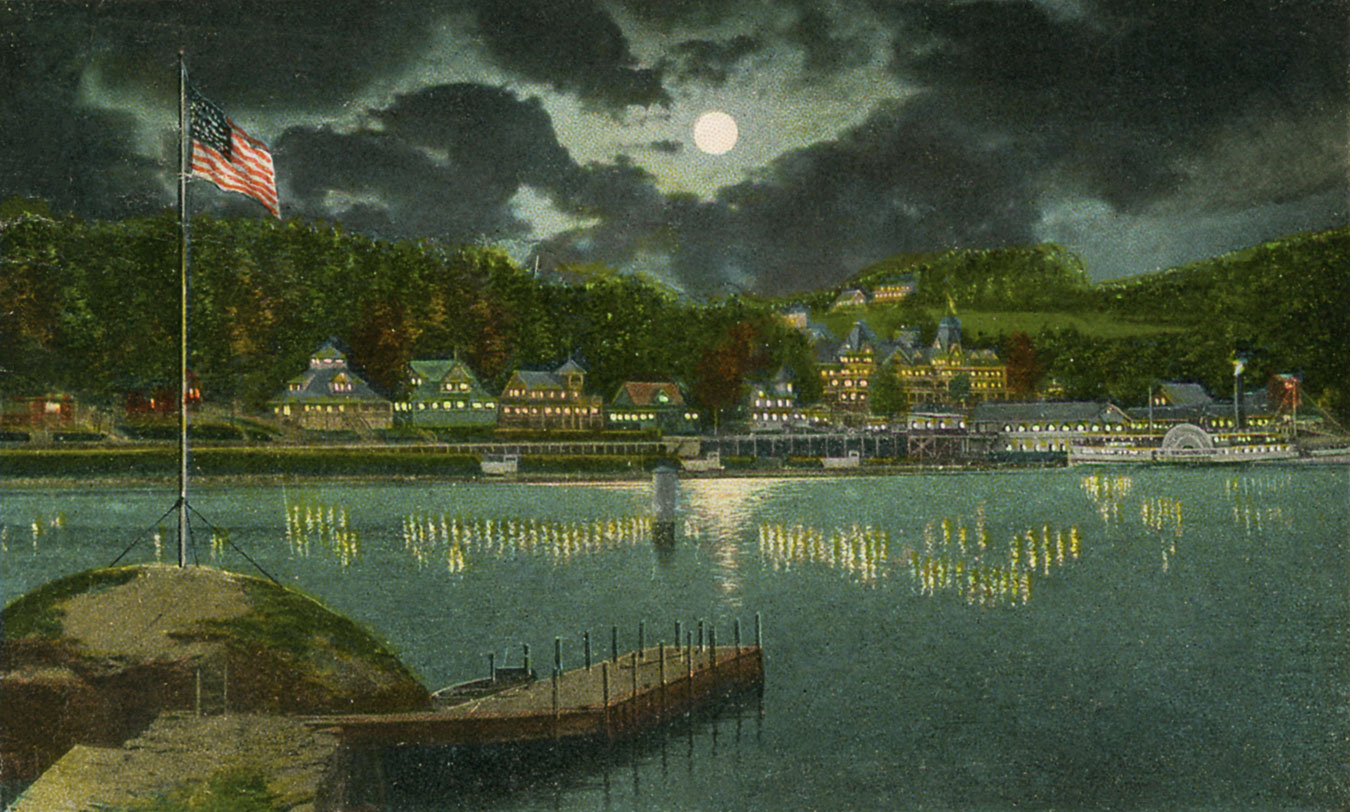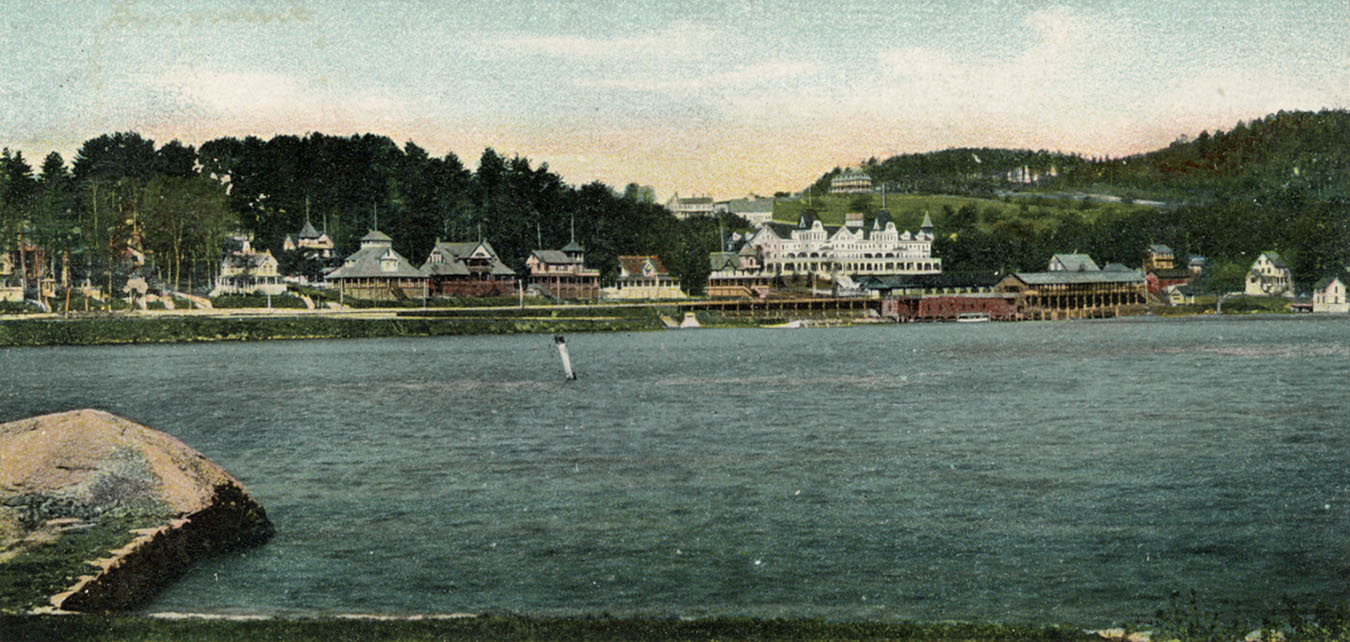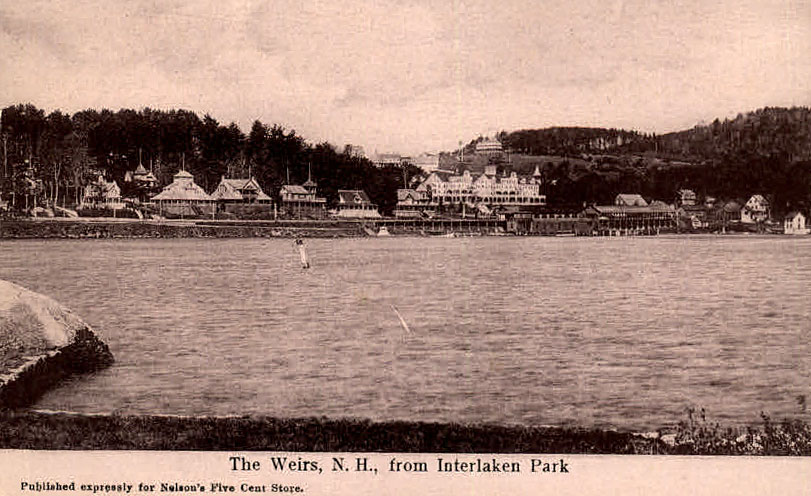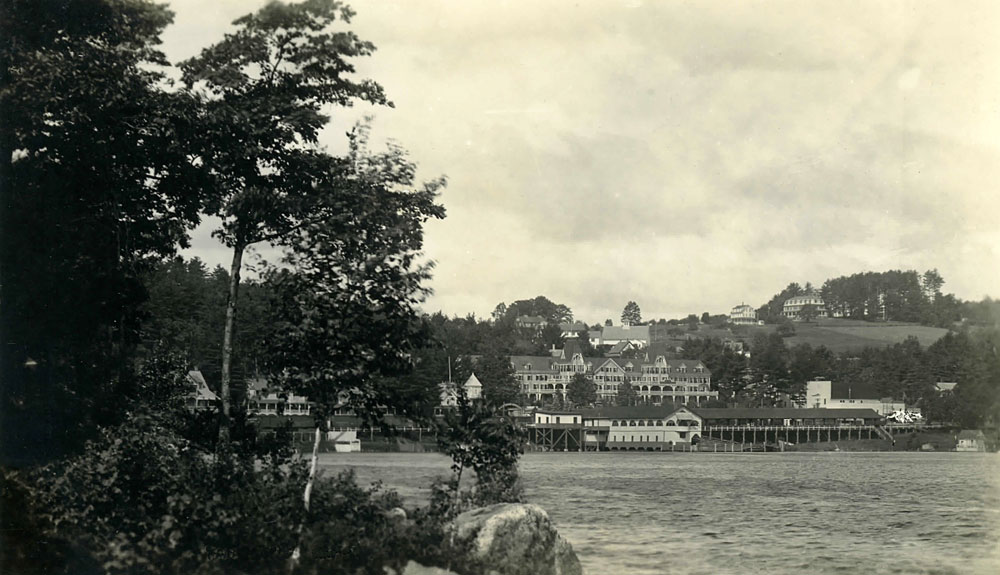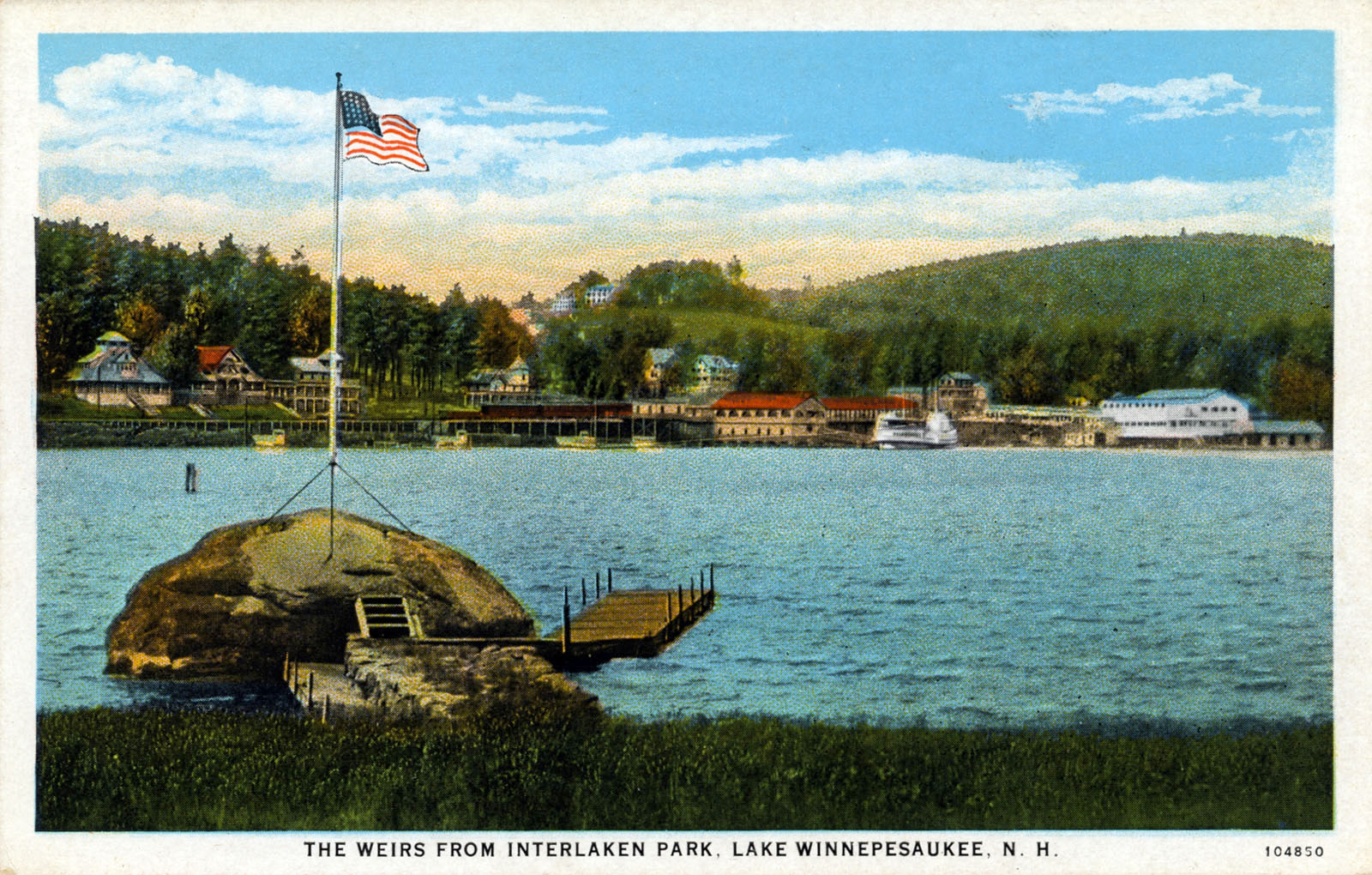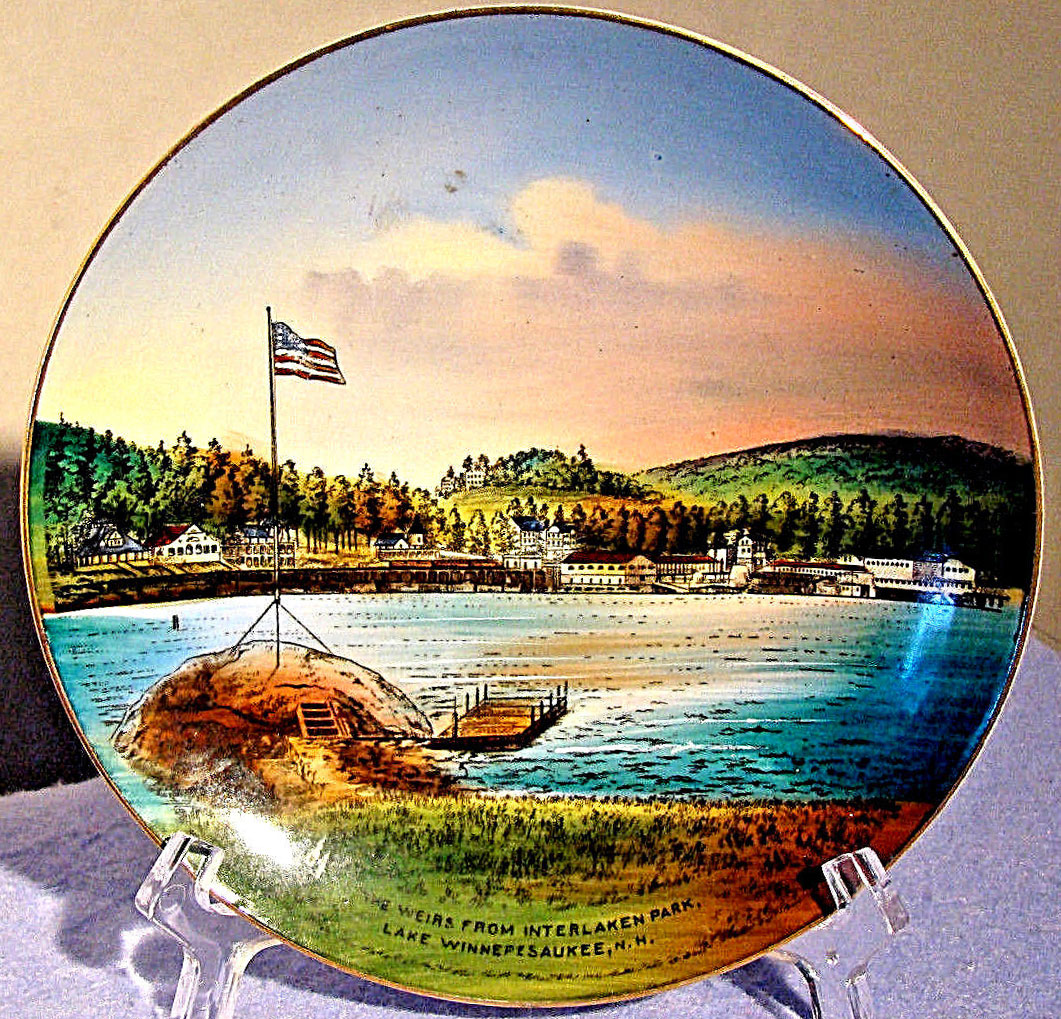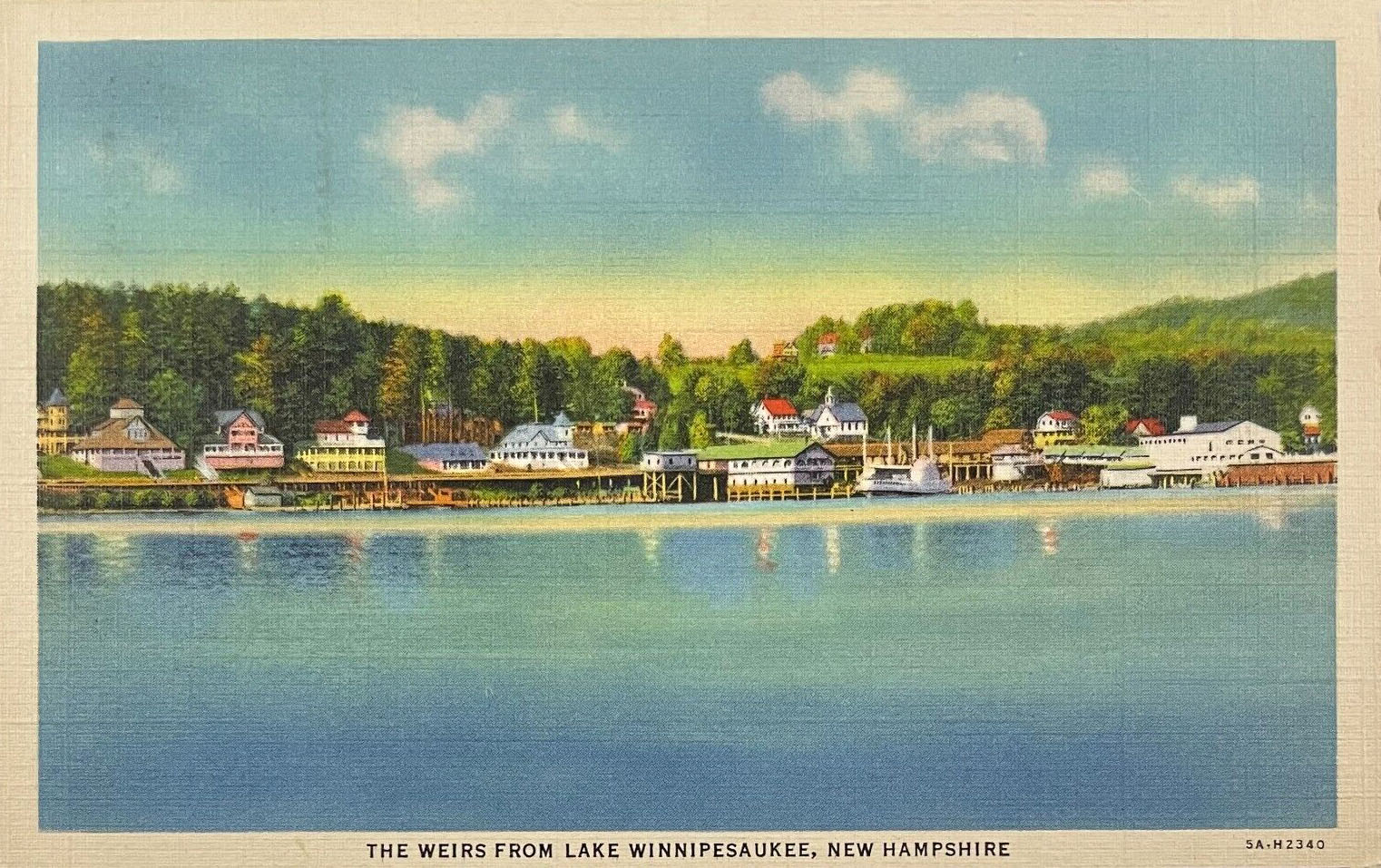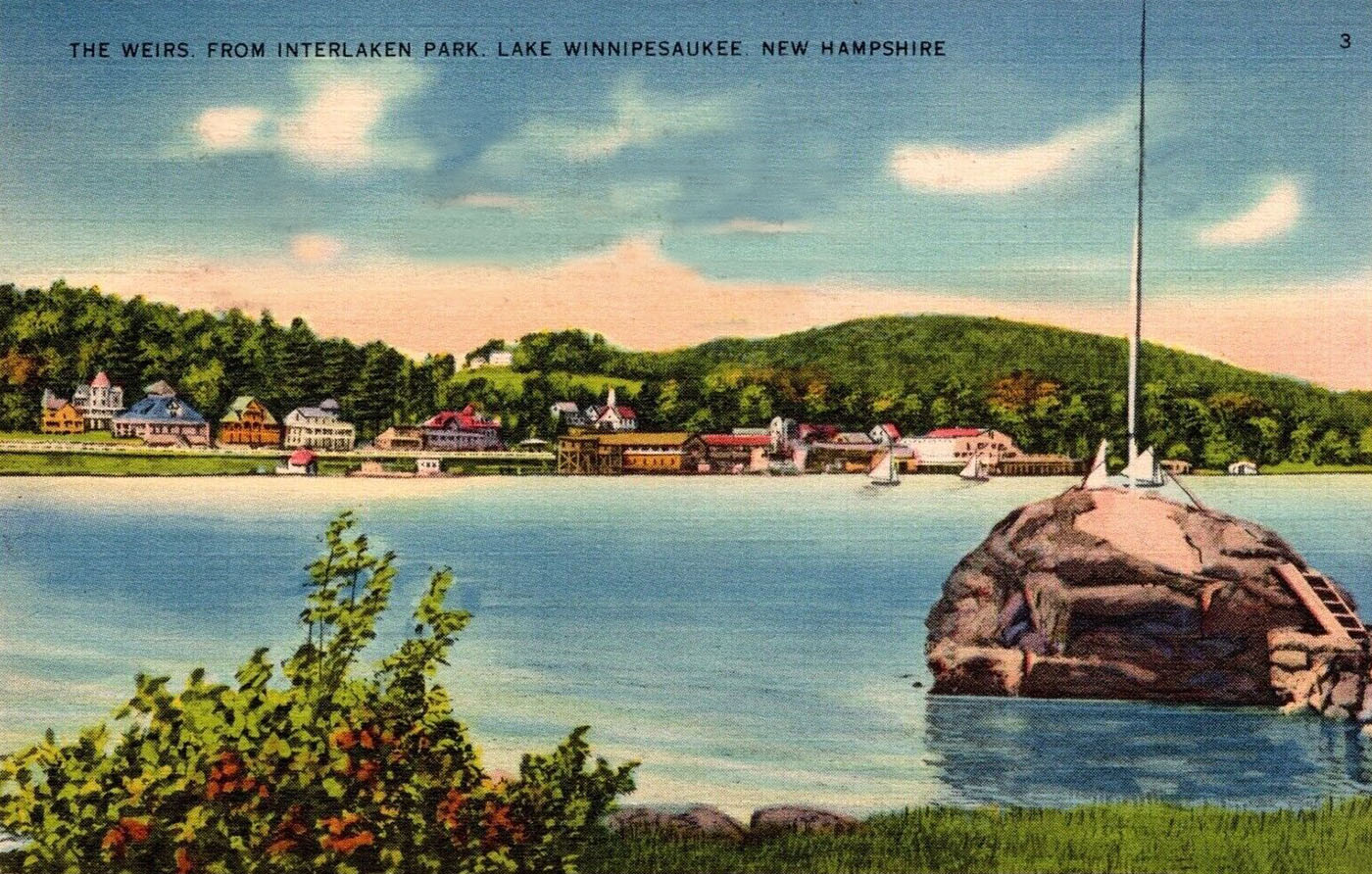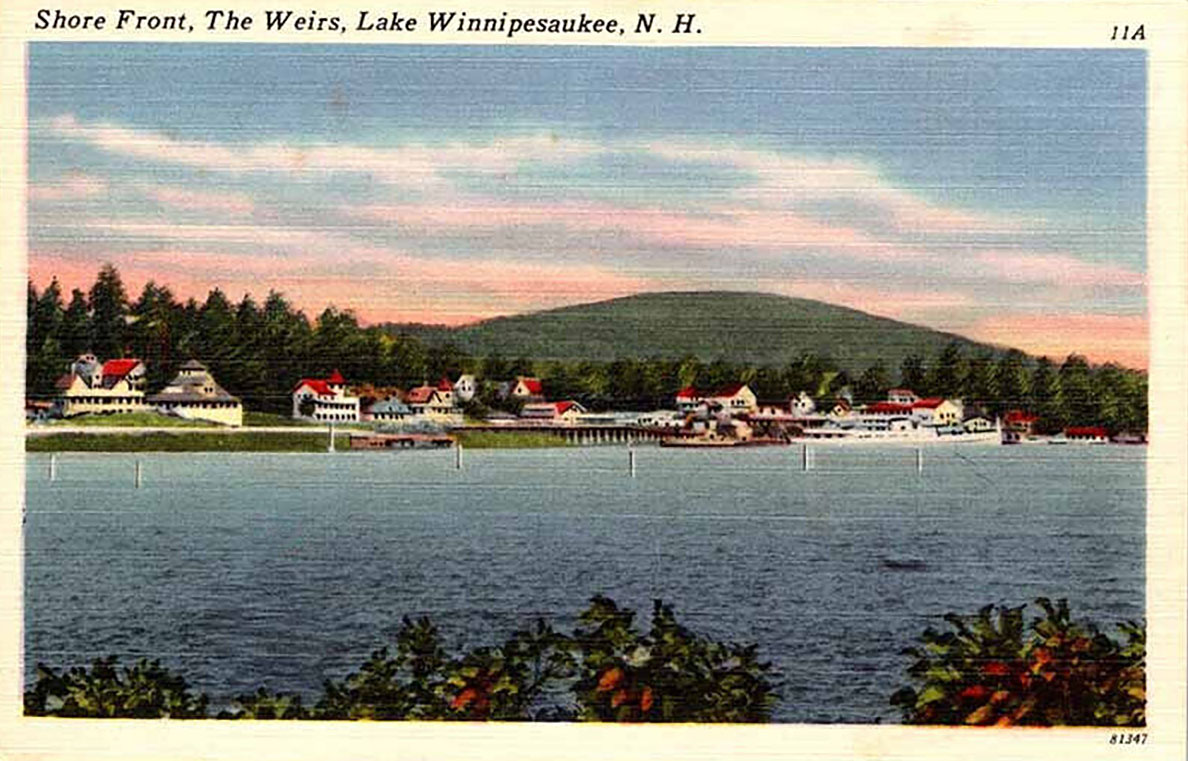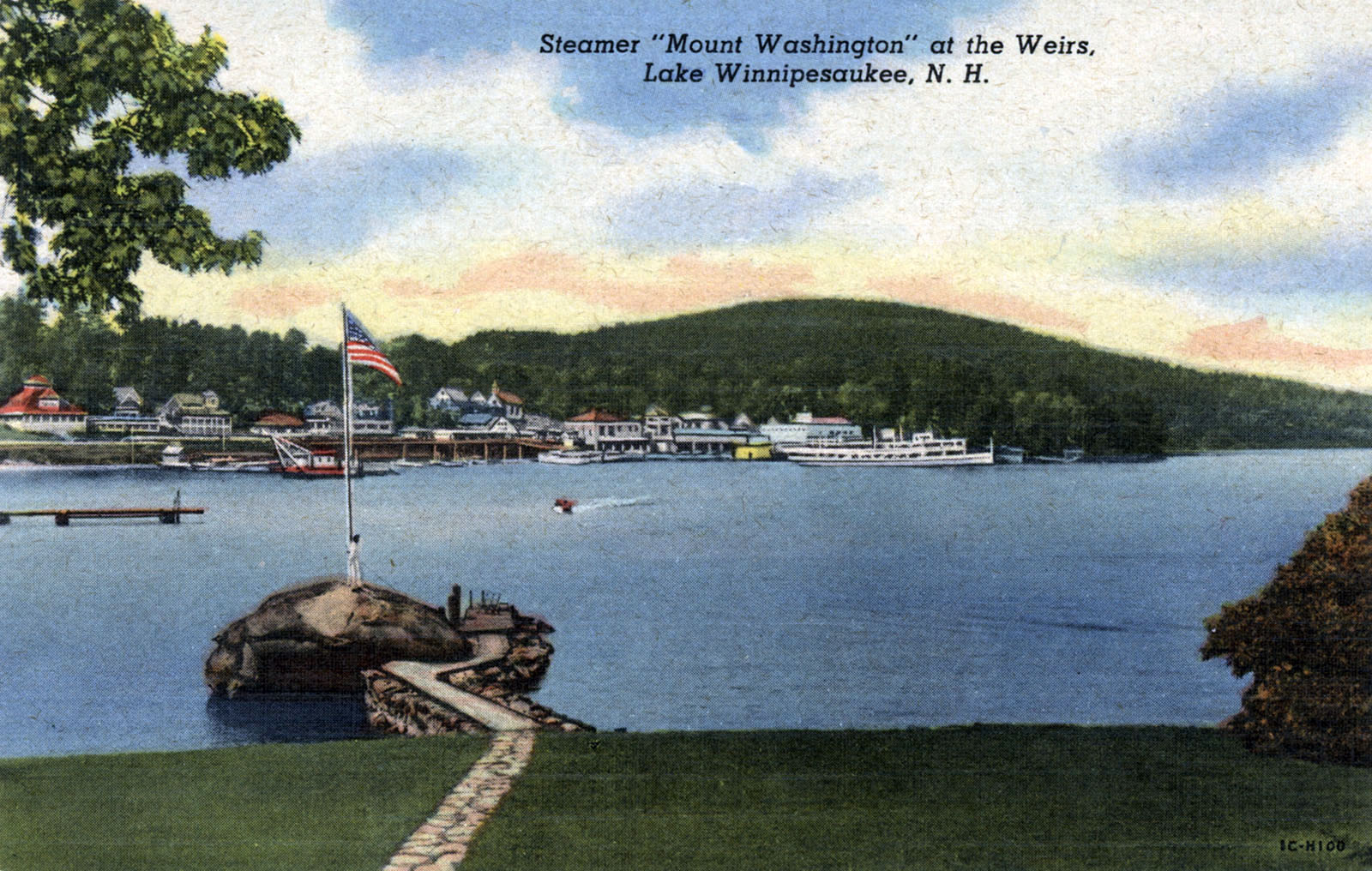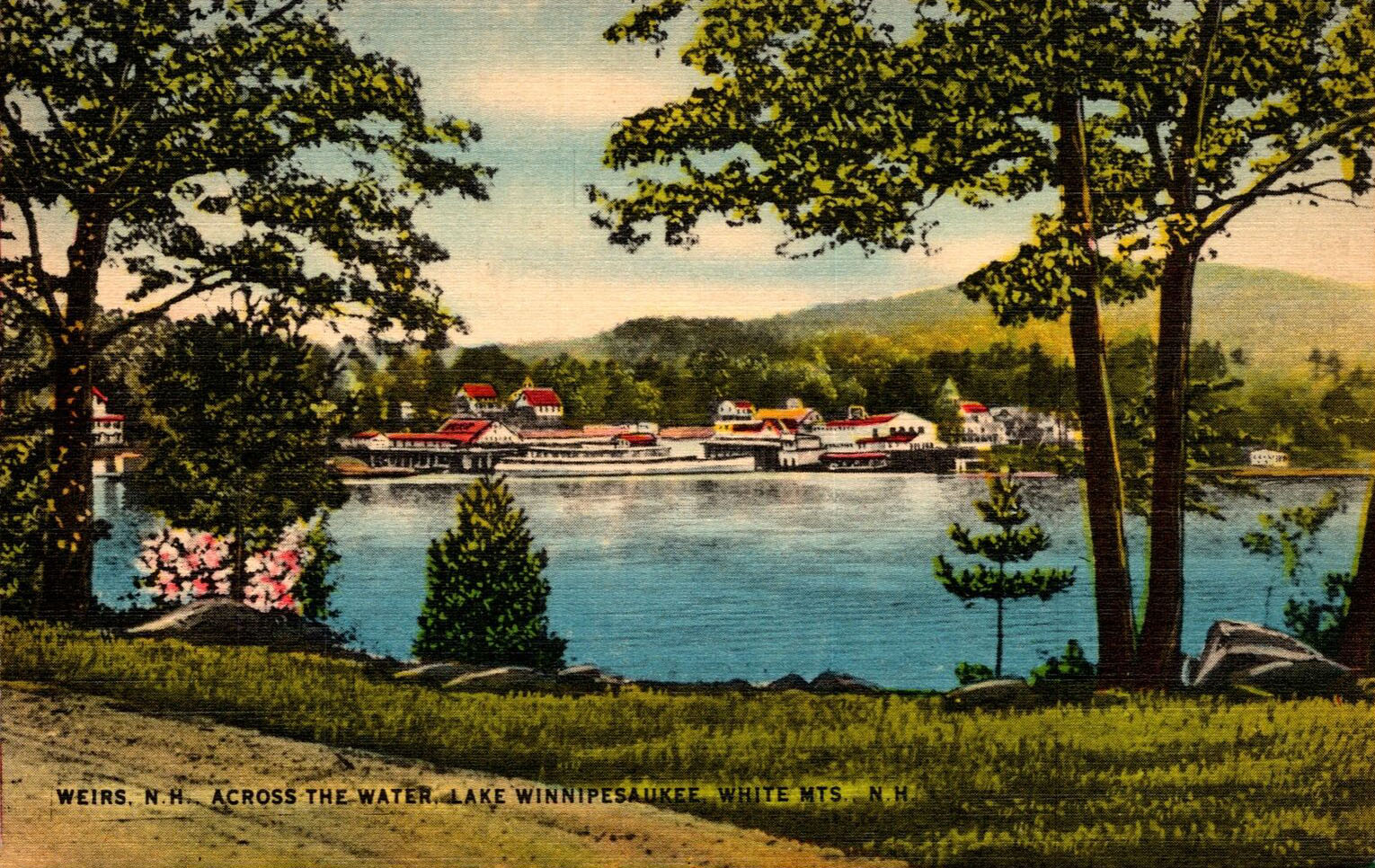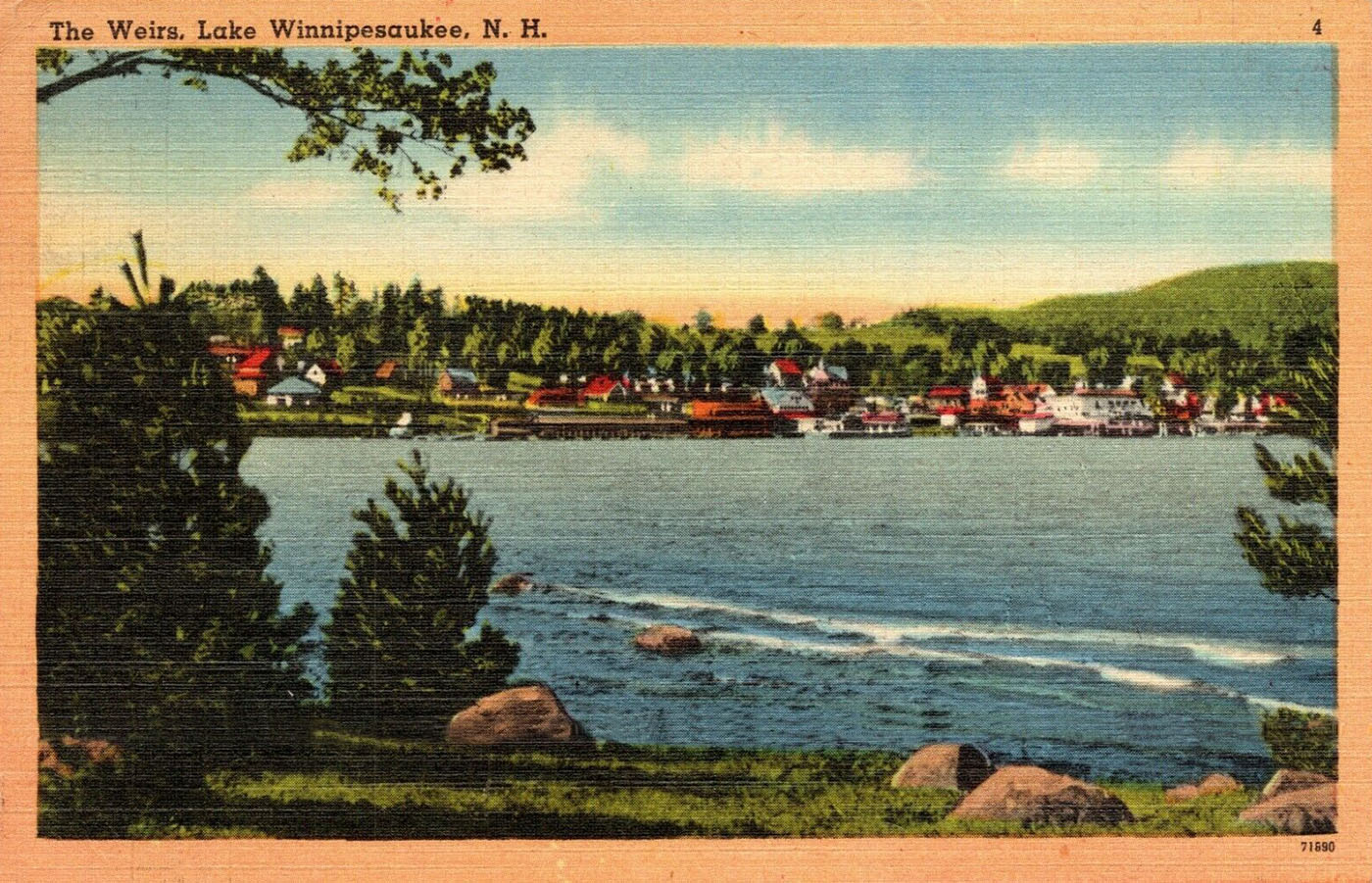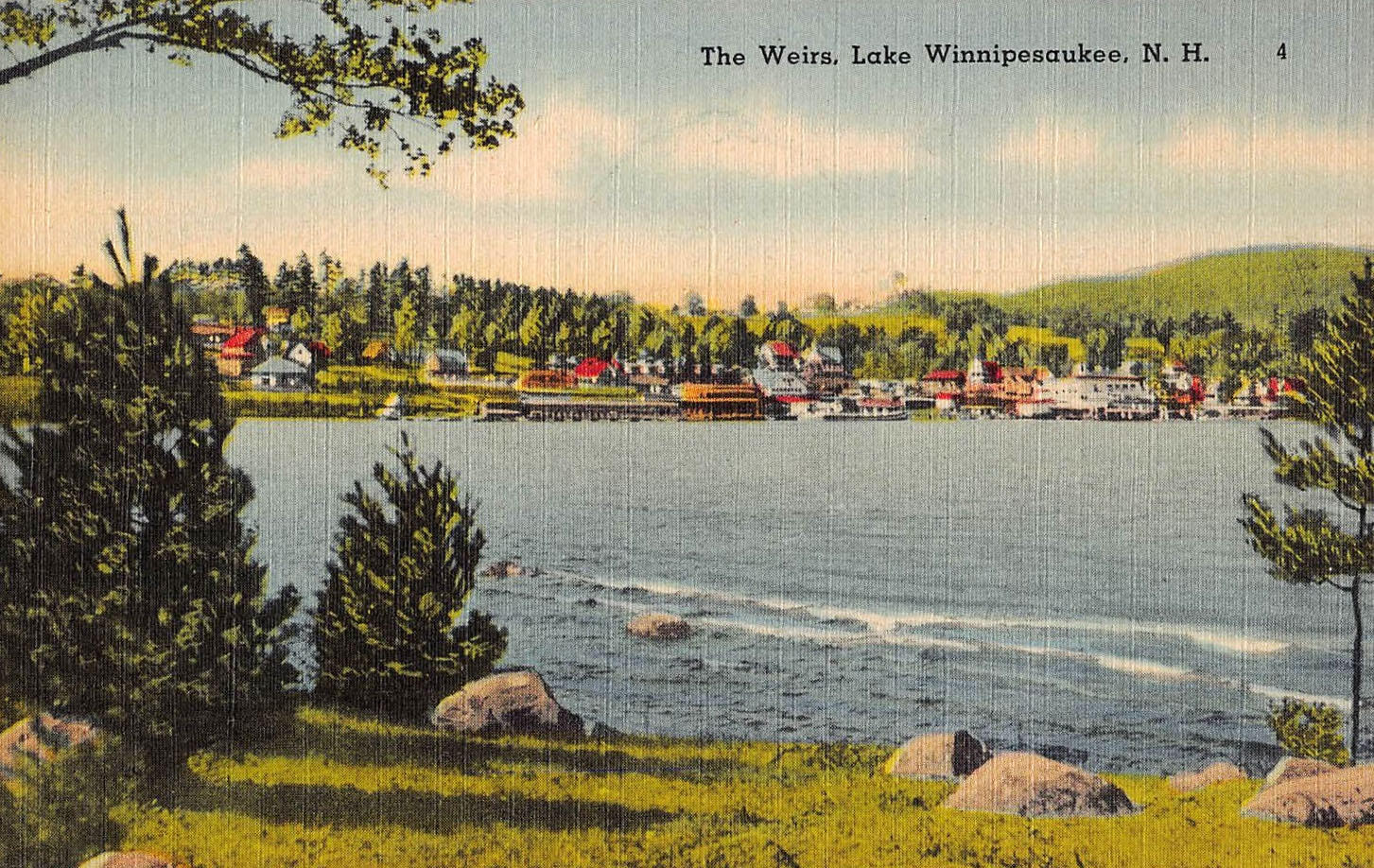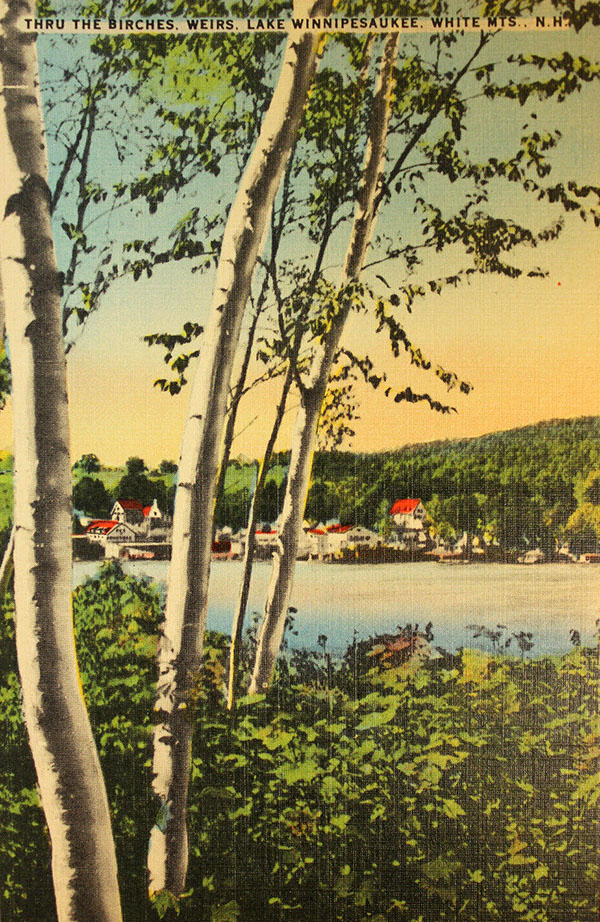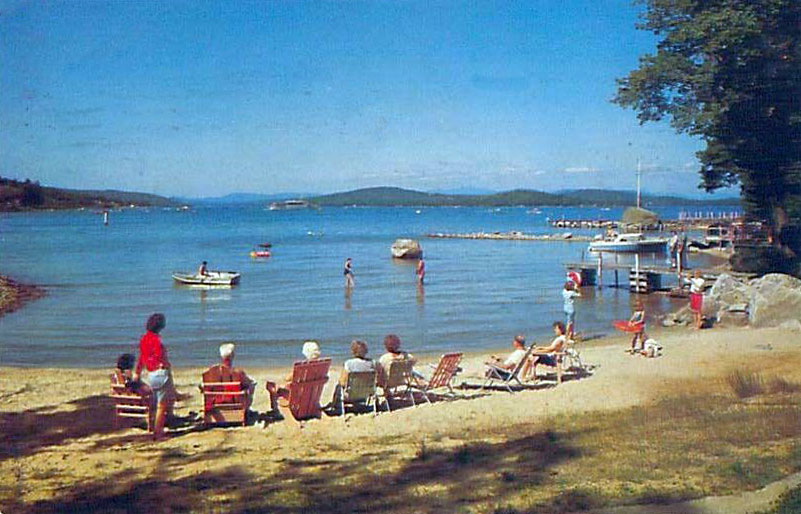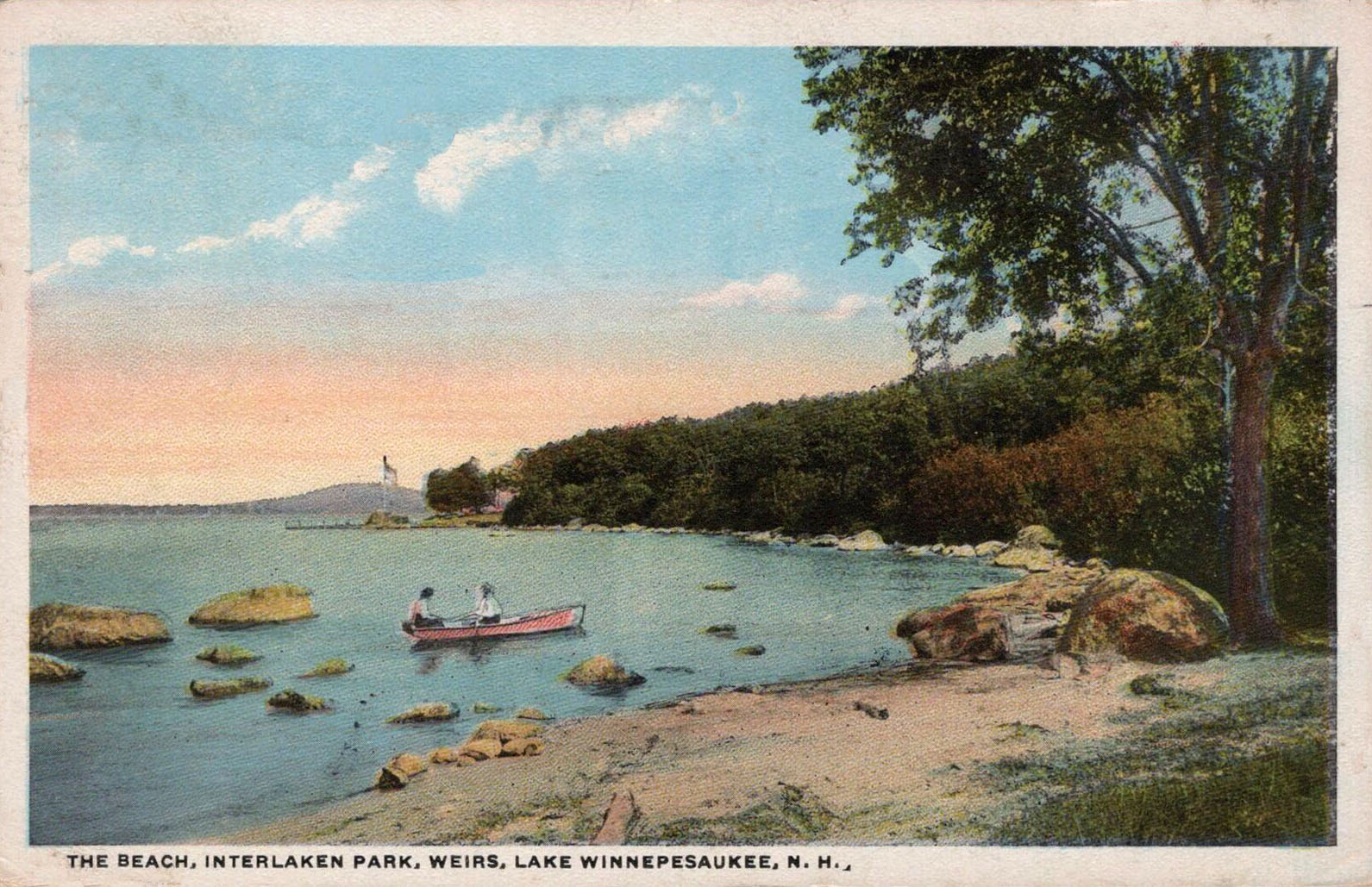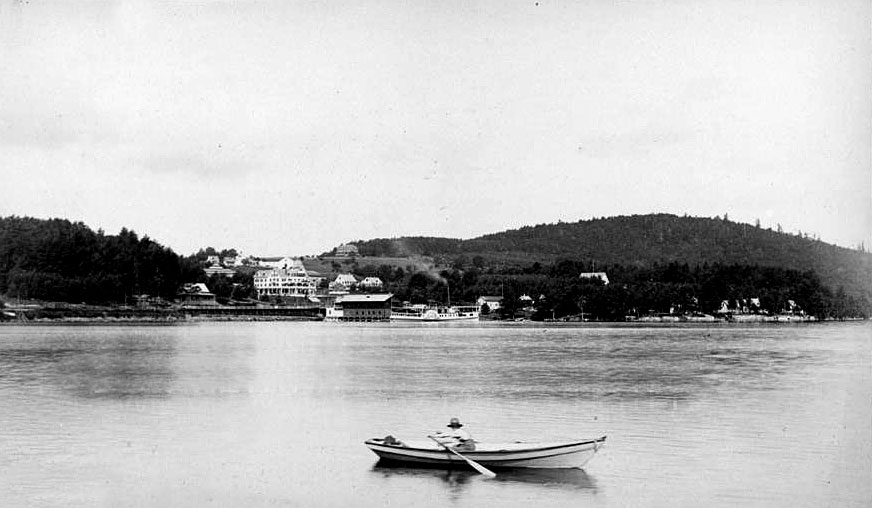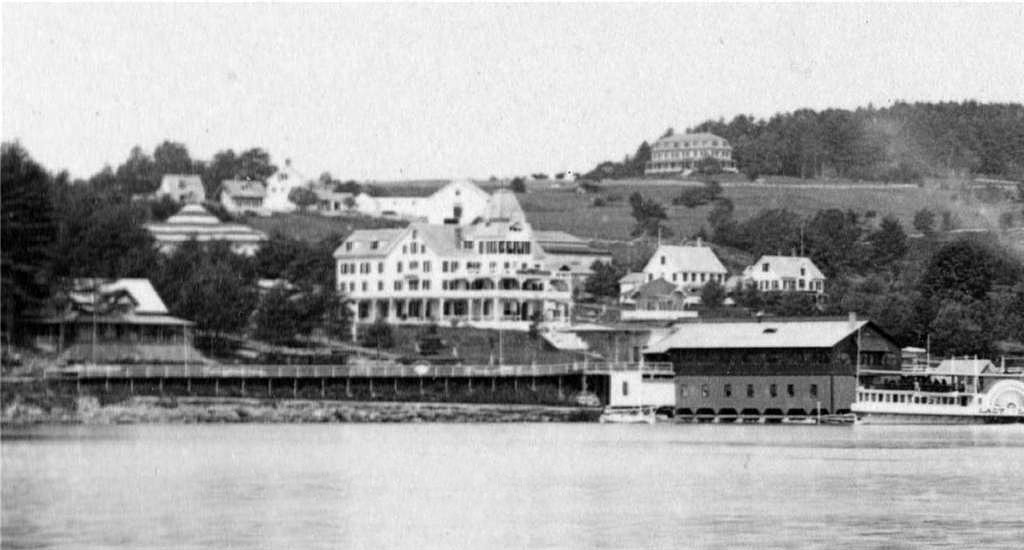Interlaken Park
The following plan of Interlaken Park comes from the 1899 book “The Illustrated Laconian”. Purportedly, a local businessman intended to build an alpine village on the site. Additionally, in the late 1800’s, Lake Winnipesaukee was oft referred to as the “Switzerland of America”. Hence, all the Swiss names for the streets: Oberland, Wetterhorn, St. Bernard, Grindelwald, Geneva, Lucern, Alpenrose, and Vevey. Lucerne Avenue, which parallels Interlaken Avenue on the 1899 map below, still exists. Alpenrose Avenue continues in altered form, as the Alpenrose Plaza. All the other named streets are long gone. Most of the area north of Lucerne Avenue is now part of the 27-acre Weirs Community Park.
Below is a near-modern configuration of the same area. Clearly, the development did not work out as planned for the 1899 investors. Notice that part of Interlaken Avenue still shows on the map. But this is a ghost road that does not exist. The large parcel on the map showing as belonging to the City of Laconia was formerly a girl’s camp known as Camp Acadia and is now the Weirs Community Park.
A 1992 map of Laconia indicates Interlaken Park Avenue in large bold type, but the road did not exist even then. In the detailed inset, two other ghost roads, Lakeshore Rd and Wesley Ave, are shown in the Methodist Campground area of Weirs Beach.
Here are two identical circa-1915 views of Weirs Beach from the boulder at Interlaken Park. First view is colorized, second is B&W.
Here are three identical views of Weirs Beach from Interlaken Park circa 1920 – one by day, another by day in different colors, and the other by night.
Here are two more identical views of Weirs Beach from Interlaken Park. The colorized version was postmarked in 1905.
Here is a view of Weirs Beach from Interlaken Park circa 1930. Compare to the 1920’s photos above. Note the absence of the New Hotel Weirs and the addition of Irwin’s Winnipesaukee Gardens.
Below is a view of Weirs Beach circa 1935. The private wharves have been removed, replaced by the Weirs Seaplane Base. Jean’s Cafe has been built on the location of the former Third Regiment building.
A late 1930s linen postcard, with a similar view to the previous card. This card was postmarked in 1940.
Here is a view of Weirs Beach from Interlaken Park circa 1945. The old Mount has been replaced by the new diesel Mount, but the caption still calls it a “Steamer”.
A 1950’s postcard shows a view down Meredith Bay from Interlaken. The Interlaken boulder and flagpole is visible at the top right of the photo.
An interesting view from 1884, taken by the early Weirs photographer F.J. Moulton. Notable because the only Veterans building that can be seen on Lakeside Avenue is the 3rd Regiment building. Also visible in the photo is the Hotel Weirs, the Weirs Cafe, and the Lady of the Lake steamer.










